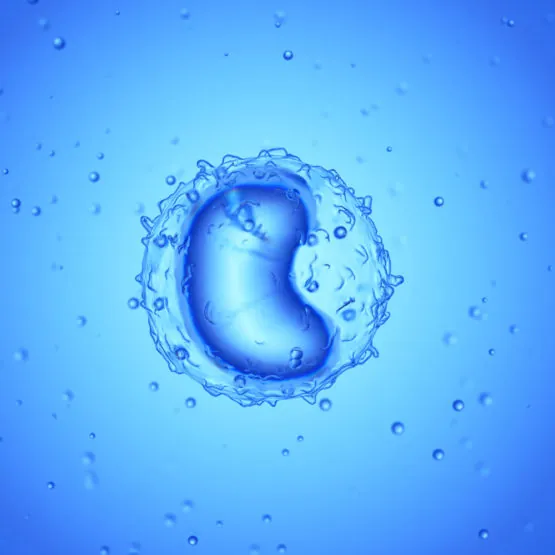Scientists from the A*STAR Singapore Immunology Network have discovered that immune cells called nonclassical monocytes undergo cellular senescence, contradicting what was previously thought of them [1].
Abstract
Human primary monocytes comprise a heterogeneous population that can be classified into three subsets based on CD14 and CD16 expression: classical (CD14high/CD16−), intermediate (CD14high/CD16+), and non-classical (CD14low/CD16+). The non-classical monocytes are the most pro-inflammatory in response to TLR stimulation in vitro, yet they express a remarkably high basal level of miR-146a, a microRNA known to negatively regulate the TLR pathway. This concurrence of a pro-inflammatory status and a high miR-146a level has been associated with cellular senescence in other cell types. Hence, we assessed the three monocyte subsets for evidence of senescence, including proliferative status, telomere length, cellular ROS levels, and mitochondrial membrane potential. Indeed, the non-classical subset exhibited the clearest hallmarks of senescence, followed by the intermediate and then the classical subset. In addition, the non-classical subset secreted pro-inflammatory cytokines basally in vitro. The highly pro-inflammatory nature of the non-classical monocytes could be a manifestation of the senescence-associated secretory phenotype (SASP), likely induced by a high basal NF-κB activity and IL-1α production. Finally, we observed an accumulation of the non-classical monocytes, in conjunction with higher levels of plasma TNF-α and IL-8, in the elderly. These factors may contribute to inflamm-aging and age-related inflammatory conditions, such as atherosclerosis and osteoarthritis. With our new understanding that the non-classical monocyte subset is a senescent population, we can now re-examine the role of this subset in disease conditions where this subset expands.
What are monocytes?
Monocytes are immune cells that can differentiate into macrophages and are involved in the process of adaptive immunity. There are three known types of monocytes: classical, intermediate, and nonclassical. The nonclassical ones are the most pro-inflammatory even though they express high levels of miR-146a, a micro-RNA that is known to limit inflammatory responses. This apparent contradiction is what led the authors of this study to discover if there is more to miR-146a than meets the eye.
MiR-146a and cellular senescence
The micro-RNA miR-146a has indeed been associated with cellular senescence in a range of different human tissues. Cellular senescence is a phenomenon by which normal cells stop dividing and begin secreting a highly inflammatory cocktail of chemicals known as the senescence associated secretory phenotype (SASP). Cellular senescence may occur spontaneously as a result of exposure to different stressors, as an anti-cancer response to oncogene activation, or when telomeres wear out due to cellular replication.
In modest amounts, senescent cells have beneficial roles; however, they tend to accumulate as we age, which results in a constant, low-grade inflammation as well as a higher susceptibility to a range of age-related diseases, cancer included, in the elderly.
Given that the elevated pro-inflammatory activity of nonclassical monocytes is rather reminiscent of the SASP and that they display such high levels of miR-146a, the scientists reasoned that nonclassical monocytes may well undergo senescence, even though this was against what was previously thought.
The study
In the first part of their research, the scientists studied monocytes in vitro, looking for typical signs of cellular senescence. Specifically, they focused on Ki67 expression and telomere length. Ki67 is a protein that is expressed only by proliferating cells, and among the three types of monocytes, nonclassical ones had the least expression of this protein as well as the shortest telomere length, which suggested that nonclassical monocytes are the least proliferative ones as well as the most senescent.
Both in vitro and in vivo from a set of healthy human volunteers, nonclassical monocytes also exhibited the SASP along with an abundance of NF-κB, which is a transcription factor for many pro-inflammatory cytokines, and membrane-bound IL-1α, which regulates NF-κB.
After ascertaining the typical signs of senescence in nonclassical monocytes, the scientists moved on to determining whether elderly patients display an accumulation of these cells compared to younger people. They collected samples from 30 healthy volunteers between the ages of 22 and 35 years and 30 healthy elderly people aged 55 and older. While there was no significant difference in the total percentage of any of the three monocyte types between the two groups, the researchers found out that the elderly had a higher monocyte count per volume of blood, especially nonclassical monocytes. Accordingly, the level of inflammatory cytokines in the blood of the elderly was significantly higher. This led the scientists to conclude that senescent monocytes do indeed accumulate in the blood of the elderly and may well contribute to inflammaging, which is the chronic, low-grade inflammation that is typical among older people.
Conclusion
The researchers suggest that nonclassical monocytes might be a viable target for treating age-related and chronic inflammatory conditions, even non-age-related ones. It may be possible to reduce the SASP secreted by nonclassical monocytes or reduce the number of circulating nonclassical monocytes.
There is already plentiful evidence of the deep involvement of cellular senescence in the development of age-related pathologies, and this study reinforces it even further. Therefore, treatments that target senescent cells might be a winning strategy against aging.
Literature
[1] Ong, S.-M., Hadadi, E., Dang, T.-M., Yeap, W.-H., Tan, C. T.-Y., Ng, T.-P., … Wong, S.-C. (2018). The pro-inflammatory phenotype of the human non-classical monocyte subset is attributed to senescence. Cell Death & Disease, 9(3).




